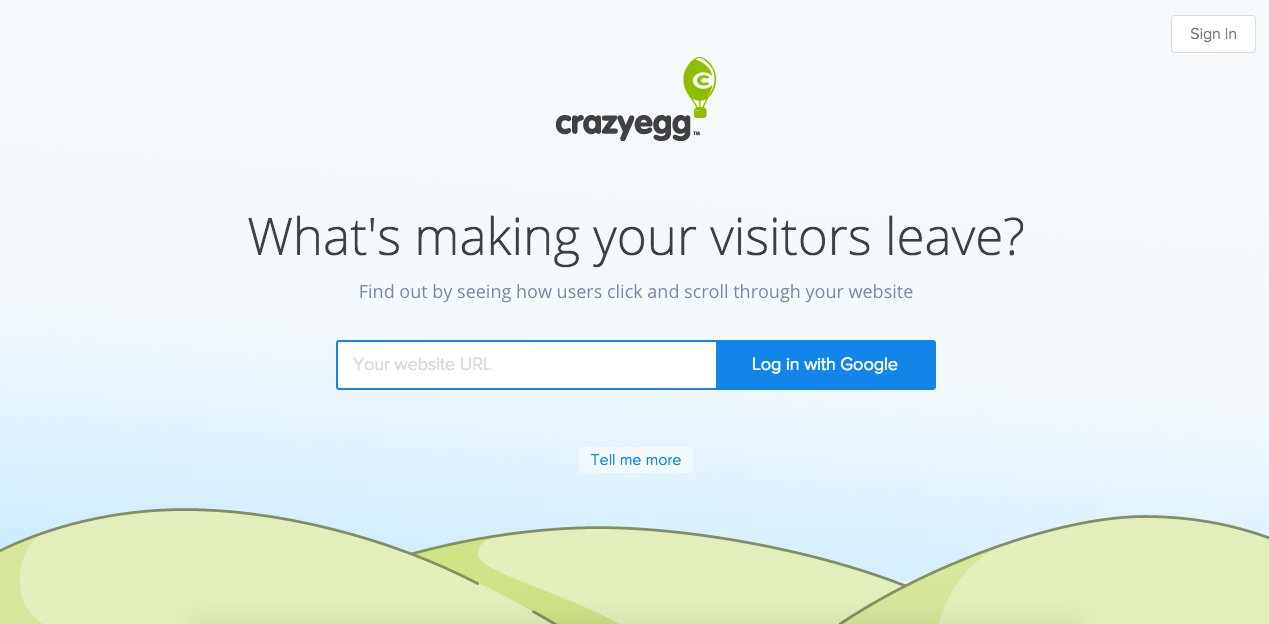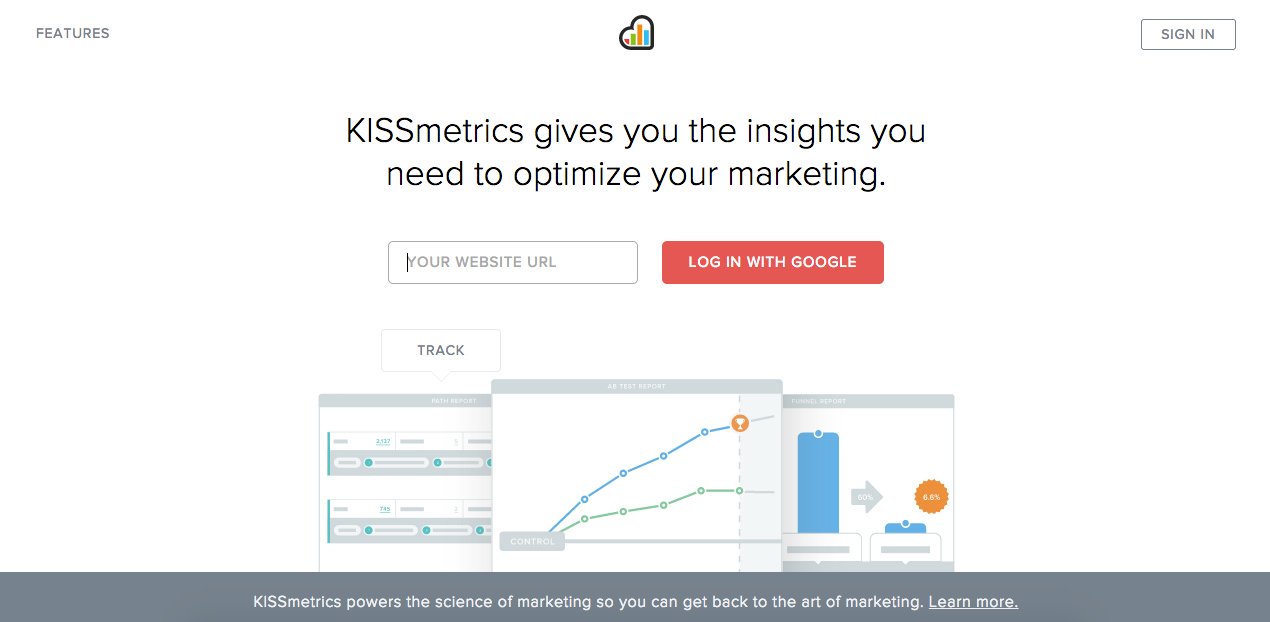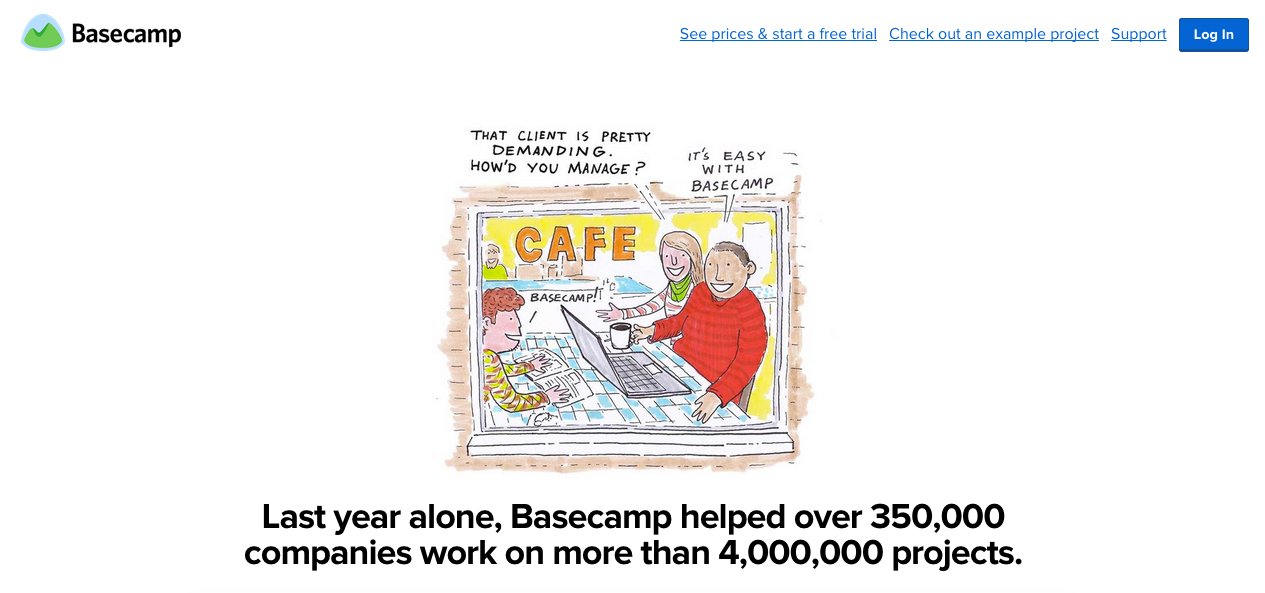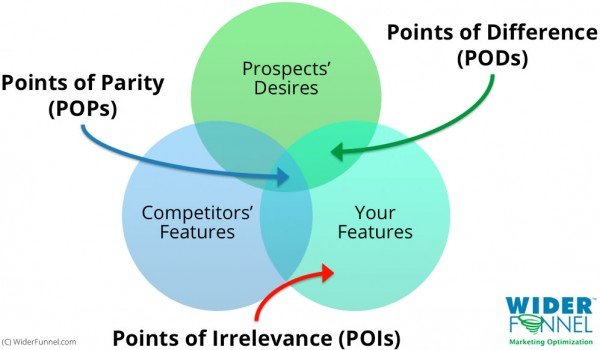A Practical Guide to Optimizing your Value Proposition and Increasing Conversions
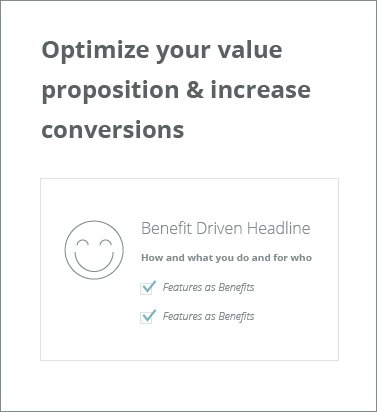
Whether you’re an online shop, software company or simply generating leads online you need to be constantly optimizing your websites conversion rate.
One of the best ways to increase the conversion rate of your site is by optimizing your value proposition.
Your value proposition is your promise of value to a potential customer, it should communicate to them why they should buy from you and not someone else.
Optimizing your value proposition also helps to decrease your landing pages bounce rates, increase your potential conversion rate and gain conversion lifts that lead to increased profits.
In this in-depth guide to value propositions we’ll explore:
- Value proposition definition
- What a value proposition is not
- Why you should be optimizing your value proposition
- Reducing your bounce rate
- A practical step by step process for optimizing your value proposition
Value proposition definition
A value proposition is everything a potential buyers finds value in on your site, it is often the first thing visitors see on the main landing pages of your website and typically will be made up of a number of elements:
- Headline
- Subheadline
- Bullet point list
- Image / Video
- Call to action
- Proof
- Guarantee
All these elements are not mandatory but they form a good framework for creating or improving your existing value added proposition.
Your value proposition should explain the outcome of using your product, who it is for and how it solves their biggest pain points specifically.
Think of it as an elevator pitch to your new visitors that focusses on the benefits and the outcomes of using your product or services over your competition.
A potential customers motivation to buy your product or services can be calculated as follows:
motivation = perceived benefits – perceived costs
It is all about perception, understanding what your customers perceive as high value. Your customer value proposition.
And let’s not forget humans are very complex, what is valuable for some maybe be unimportant to others. So you need to position your product within your industry.
For example Dolce & Gabbana do not sell the cheapest clothes and Ikea does not make the most luxurious furniture.
You need to pick a niche within your market, learn what really matters to the people within that niche when buying and position your product or service towards them.
Al Ries and Jack Trout in the classic marketing book Positioning: A battle for your mind explain that while positioning begins with the product, your focus should be positioning that product in the mind of the consumer.
You need to present a simple message that is consistent with what the consumer believes by focussing on the prospects perception of your product rather than the realities and features of it.
What a value proposition is not
The point of your value proposition is not to list every features or benefit, you need to test which benefits are the most important to your audience using conversion optimization. Then focus your value proposition on communicating those benefits.
And stay away from technical jargon, if your value proposition sounds like you need a degree in nuclear science to decode it you’ve got it wrong.
Write for your audience and make sure you use simple language. Copywriting is not about using technical vocabulary to sound smart, it’s about communicating your company’s value in the most clear and concise way possible.
And while we are on the subject of poor value propositions, please don’t make unbelievable comments. Like “The best burgers in the world”, people are not stupid and simply won’t trust remarks like these.
Some people also confuse a value proposition with a number of other marketing frameworks.
For example:
USP/UVP
Your unique selling point or unique value proposition is similar to a value proposition but different as it focusses only on the part that is unique, not the whole value.
FAB
Your features, advantages and benefits model is an explanation of your features as outcomes or benefits. Again only a part of the whole value proposition.
Your value proposition is also not a slogan.
For example:
“I’m loving it” from Mcdonalds.
or
“Just do it” from Nike.
It is also not a positioning statement which again is only a part of a complete value proposition.
For example:
“For World Wide Web users who enjoy books, Amazon.com is a retail bookseller that provides instant access to over 1.1 million books. Unlike traditional book retailers, Amazon.com provides a combination of extraordinary convenience, low prices, and comprehensive selection.” Amazon 2001.
Why you should be optimizing your value proposition
Optimizing your value proposition helps focus your business and marketing efforts in one direction or on one core pain point within your market.
It stops you from wasting time trying to acquire the wrong customers with the wrong marketing message. Demonstrating to your prospects you understand their needs and what they value in a product or service of that kind.
It also helps you align your product with your prospects goals, clearly and concisely communicating to them the outcome of spending money with you.
It improves your sales process, giving you a clear and simple way to communicate your offering to potential buyers confidently.
Creating a value proposition is also a great way to validate a new company or product idea for startups.
Charles Kettering a famous inventor once said:
A problem well stated is a problem half-solved
So if you’re reading this and about to start a new project, consider creating a value proposition to validate your product / market fit.
Reducing your bounce rate
Your landing pages, the main pages by which someone enters your site are a great place to start optimizing your value proposition.
This is the beginning of the sales funnel within your site and where a visitors will decide whether to stick around or leave.
This is referred to as bounce rate in digital analytics, or the percentage of people who instantly leave your site on entry.
You want to have the lowest possible bounce rate percentage and therefore the highest potential conversion rate.
But to get people to stick around you need to clearly communicate your product or services value as soon as they land on your site. You communicate the value through your value proposition.
In fact typically you only have a few seconds to persuade each person to continue reading before they leave your site, maybe forever.
This can be expensive whether you drive traffic from referral or paid sources and can make for a poorly optimized marketing expenditure. Basically you’re leaving dollars on the table.
A practical step by step process for optimizing your value proposition
There are 6 steps in creating or optimizing your value proposition. Let’s walk through them with examples to help you create or iterate on yours.
Step 1: Define success metrics or business goals
As with all marketing initiatives it is important to first define what metrics you are trying to improve and what success looks like.
When optimizing your value proposition there are often two primary goals.
The first is to improve the micro conversion rate. This may be an email opt in on your landing page or a free trial signup conversion rate, but this can be whatever the one main task is you want the user to complete on the landing page.
The second as with any conversion rate optimization work is improving profits through increased conversions.
Step 2: Data Collection
To create or iterate on an existing value proposition you need to collect data as an input to your copywriting and design.
A great source of data to collect is qualitative data in the form of customer interviews.
Your customer interviews should be focussed on learning how your prospects perceive their problems and how they define them.
You should schedule at least 10 interviews of around 15 minutes. Make sure to record the audio of the interviews, if they are over Skype you can use Piezo.
I have included a handy spreadsheet to record your call data in the bonus area at the end of the guide.
Make sure to record the exact word the prospects use during the interview, not your interpretation of them. We will use these as input into your copywriting later on in the process.
Keep these below points in mind when creating open ended questions to ask your prospects during the interviews:
- What is their end goal or outcome from your product or service?
- Who is the target customer? Think about psychographics as well as demographics.
- What improvements do they look for compared with their current service?
- What hard or tried and tested results do people expect?
- What do they think makes you unique?
An example open ended question would:
“What is your biggest frustration with [your topic] at the moment?”
You are not asking them about your product, but about their problems.
Step 3: Analyse your data
Once you have completed the interviews, recorded the audio and filled in the spreadsheet it is time to analyze the data.
Look for improvements prospects seek or outcomes they desire that are common or recurring.
You are trying to understand how they perceive their problems so you can position your product towards them.
Write a list of the common words or phrases people use as input for your copywriting in the next step.
You can do this easily by pasting all the transcribed interview text into a word cloud app.
Step 4: Hypothesis Creation
Now it is time to draft a number of value propositions based on your analysed data. Write out a lot of variations and boil them down to the three strongest ones keeping these guidelines in mind:
- Does the value proposition describe what product or service your company selling?
- Does it communicate the benefit or outcome of using it?
- Does it show how you enable the outcome?
- Does it describe who the target customer for this product or service is?
- Does it highlight what makes your offering unique and different?
- Does it avoid hype or inflammatory remarks, e.g. “Best coffee in the world!”
Value proposition example structure
All this information is really useful, but you are probably wondering how to write a value proposition.
Here are the elements you will need to create your value proposition and a content structure for what to write within each element.
Headline
First is your headline or H1, this should focus on the outcome or benefit of using your product or service. Ask yourself what result the prospect wants.
For example:
Hubspot has a very simple and clear headline, “Grow your business”. As a marketing software suite this perfectly captures in the easiest to understand language what prospects are looking for as their core result.
Use the word list you created when interviewing prospects to help write this section. If your product deals with ‘sales funnels’ but the prospects refer to it as a ‘pipeline’ then which word should you use in your headline? (It’s ‘pipeline’)
When writing this sentence keep asking yourself how? be more specific!
For example:
- Increase your sales
- Increase your sales by 10%
- Increase your sales online by more than 9%
Subheadline
Second is your sub headline, this is often a H2 or a two to three sentence paragraph. This should focus on how your product or service enables the outcomes and what makes it unique.
For example:
Crazyegg’s headline and subheadline reads:
Headline: “What’s making your visitors leave?”
Subheadline: “Find out by seeing how users click and scroll through your website”.
Their subheadine describes how the product enables the desired outcome or benefit clearly and uniquely.
Ensure you write specific facts too. For example, “The largest online shoe store” has little meaning and can be considered marketing mumbo jumbo. But “Selection of 56,487+ pairs of shoes” is specific enough to have an impact.
Bullet points list
This list should further communicate the benefits and unique value your product offers. The easiest way to create this list is to take your top three features that are perceived as high value by your prospects and write their outcome or benefits.
For example if you are a marketing software company and offer a landing page creation tool then the benefit of this feature or tool would be lead generation.
Don’t forget to ask yourself how or how you uniquely enable lead generation. Does your tool work out of the box and is therefore fast, does it allow complex customization or integrations?
Turn your features into benefits and position them to what your prospects value.
For example:
Infusionsoft lists three benefits of using it’s sales and marketing software.
- Get organized
- Grow sales
- Save time
Images or Video
The images or video that support your copywriting should illustrate the product or service further. Shopify makes good use of two images in it’s value proposition to showcase it’s two core products, ecommerce websites and point of sale systems.
The benefit communicated here is that you can sell online and in store using an integrated system.
Call to Action
When it comes to designing your website for higher conversions you need to pick one main task for the user to complete on each page. Then focus the visual hierarchy of the design on that task to help push your user down your sales funnel.
Kissmetrics does a great job of this by using a contrasting red call to action button surrounded by whitespace in their landing page. Your eye is drawn to the headline which is benefit driven and then the call to action which asks you to ‘log in with google’.
Proof
As we know people are skeptical when making purchasing decisions and often need proof to push them over the conversion line.
Basecamp uses metrics here to highlight how many people it’s software helped with project management in just one year, this alleviates reservation people have like “Will it work for me”.
Other forms of proof you can use are:
- Customer testimonials or stories
- Case studies with hard facts or data
Guarantee
Even when you have amazing metrics like Basecamp to show off your product people want and often need guarantees in order to convert. This can be in the form of a free trial or a money back guarantee.
People want the risk of working with you to be removed, remember our motivation equation?
motivation = perceived benefits – perceived costs
By removing risk you reduce the perceived cost of buying from you and increase the motivation to buy!
Visual website optimizer offer a free trial and even highlights below their call to action (which is nicely contrasted!) that you don’t need a credit card to get started.
Examples differentiators
Now while it is easy to say, “be unique” with all the competition out there it is not that simple.
To help out I’ve put together a list of differentiators you can consider to help you understand what makes your product or service unique.
- Newness, e.g. ipod, segway
- Customization, e.g. vans vs converse
- Lifestyle marketing or status symbol, e.g. Ray bans vs unbranded sunglasses
- Usability and design aesthetic, e.g. Nest
- A discounted price
- Free shipping
- Fast shipping / Next day shipping
- Free bonus with a purchase
- Free setup / installation
- No long-term contract, cancel any time, e.g. month by month contract
- License for multiple users vs 1
- Money-back guarantee
- Peer or social endorsement, e.g. Celebrity association
- Performance
- Convenience, e.g. An online course vs finding and compiling learning materials
How to create positioning ideas
Kevin Keller in an article on Harvard Business Review discussed the use of POPs, PODs and POIs when positioning products. Points of parity, points of difference and points of irrelevance.
If you are more visually minded this framework and venn diagram from Wilder Funnel will help you come up with new ideas for positioning and differentiation.
Points of Parity (POPs)
Your POPs are features with important benefits that are shared with your competition. They are like the must have tools in your suite if you were a software company. Your prospects need to know you’ve got these bases covered but won’t see them as important factors in their decision making process.
Points of Difference (PODs)
These are the features that your prospects have told you are high value that your competitors do not offer. This is the gold and what your value proposition should focus on. These are your differentiators and what makes your offer unique.
Points of Irrelevance (POIs)
These are all the extra features that you offer that your prospects do not value are Points of Irrelevance.
Putting it all together
By now you should have an understanding of what elements make up your value proposition and what content belongs within each element.
The next step is to test which of your new value propositions work and increase conversions.
Step 5: Testing
Once you’ve created three strong value propositions it is time to test them. You can do this with split testing using software such as Optimizely or Visual Website Optimizer.
Don’t forget, if you are iterating on an existing value proposition, this should be retained as a control against your new variations in the test.
Make sure to test your new value propositions with new visitors only, this will reduce your exposure to existing customers already further along the buying process.
Step 6: Learning & Improvement
Once you’ve tested and validated your most effective value proposition it is time to start the process all over again.
Remember conversion optimization is not one and done.
You must continue to test and improve the effectiveness of your website as the market landscape and prospects needs change and evolve over time.
This is the only way you can dominate your market.
You can optimize your value proposition too
…but you must put what you’ve learned here today into action.
So I’ve put together an actionable bonus area for you to download and get started on improving your value proposition and conversion rates.


